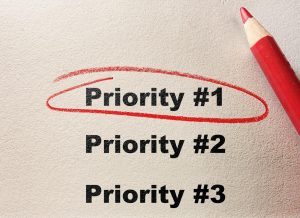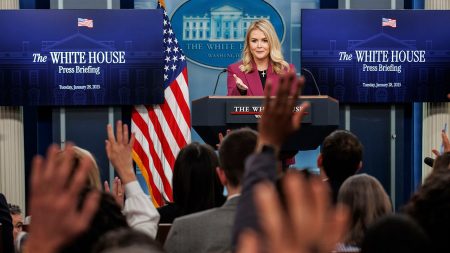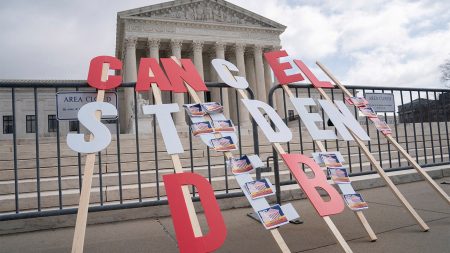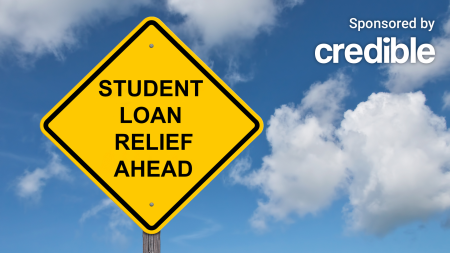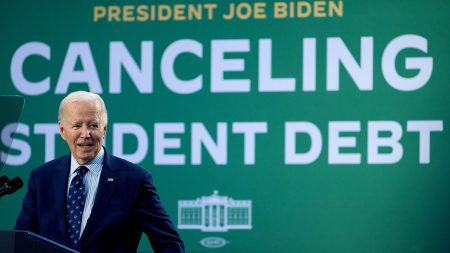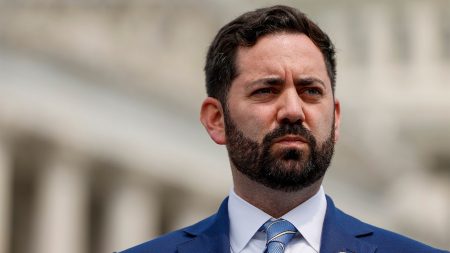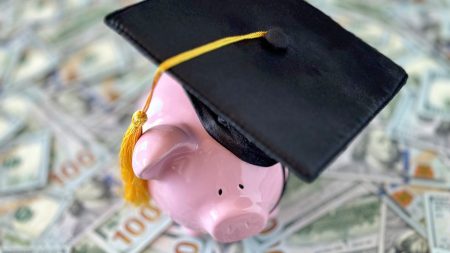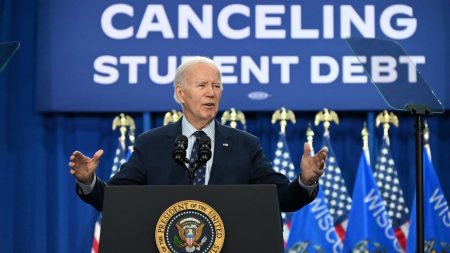Our goal here at Credible Operations, Inc., NMLS Number 1681276, referred to as “Credible” below, is to give you the tools and confidence you need to improve your finances. Although we do promote products from our partner lenders who compensate us for our services, all opinions are our own.
When you take out private loans to help fund your education, choosing between fixed- or variable-rate student loans is important, as it can impact the total cost of your loan. Most private lenders offer both options. However, the U.S. Department of Education has only made fixed-rate loans available since July 1, 2006.
Ultimately, for private student loans, you need to consider whether you’d prefer:
- A lower starting payment and the chance for rates to fall over time.
- A higher starting payment and no chance of declining rates with greater certainty for the future.
If you keep these thoughts in mind, choosing fixed- or variable-rate student loans will be an easier choice.
What to know about fixed and variable rate student loans
Fixed-rate and variable-rate loans are two different kinds of loans offered by private lenders. The key difference is in how the interest rates work.
Interest is the amount you pay to borrow money, which is typically expressed as a percentage of your loan amount — such as a 6.00% annual interest rate.
- With a fixed-rate, your interest rate is determined up front when you borrow and doesn’t change over the life of the loan.
- With a variable-rate, you’re quoted an initial interest rate, which is locked in for a set amount time. After a certain period, the rate begins adjusting.
When choosing fixed- or variable-rate student loans, it’s important to understand exactly how each one works and how your choice could impact monthly payments and total payoff costs over time.
What is a fixed-rate student loan?
Fixed-rate student loans have the same rate for the life of the loan. Whether you take out a loan with a 5-year, 10-year, 15-year or 20-year payoff period, you’ll be charged interest at the exact same rate over the duration of the loan. No matter what the prevailing market rates are, your rate will not change.
Since your rate stays the same during your whole payback period, you’ll know upfront the exact amount of interest you’ll owe over the life of your student loan (assuming you make all your payments as scheduled). You’ll always have the same monthly payment and there won’t be any surprises.
For example, if you borrow $20,000 on a 10-year term at a 7.00% interest rate, your monthly payment would be $232, and you’d pay a total of $7,866 in interest.
The downside of fixed-rate loans is that they usually have a higher rate than the initial rate offered by their variable-rate counterparts. If you have a fixed-rate loan, you also won’t benefit if interest rates decline during the repayment process, unless you refinance your private student loans to take advantage of the rate drop. If you refinance, you’ll have to decide whether to choose a new fixed-rate loan or switch to a variable-rate student loan.
If you need to take out private student loans, visit Credible to compare private student loan rates from various lenders in minutes.
What is a variable-rate student loan?
Choosing a variable-rate student loan when refinancing or when taking out your initial loan means that you’re taking on more risk. But you could potentially have a lower starting rate than with fixed-rate alternatives and could benefit if rates drop during your repayment period.
Variable-rate loans give you an initial starting rate locked in for a period of time, but your rate will change on a set schedule. Your rate will be tied to a financial index such as the Secured Overnight Financing Rate (SOFR). As this rate index changes, the rate you’re paying could fluctuate up or down.
If interest rates rise and your rate goes up, you’d have a higher monthly payment and your total repayment costs could go up.
For example, say you borrowed $20,000 at a starting rate of 6.00%. Your monthly payment would begin at $222.04. But if your rate adjusted after six months and went up to 6.25%, your monthly payment would go up to $224.45.
If your rate went up by .25% every three months thereafter, you could end up paying as much as $274.82 per month by your 117th payment. And you’d ultimately pay as much as $10,581 in interest over time.
Of course, if the index your rate is tied to shows rates going down, then your rate and monthly payment would decline and repaying your loan could cost you less over time.
Who can benefit from a fixed-rate student loan?
If you’d prefer the certainty of knowing that your payment won’t change, a fixed-rate student loan may be a better option. This can be especially important if you have a lower income and would struggle to make payments if your monthly costs increased.
If you’re planning to take a long time to pay off your loan and you believe rates will rise during your payoff period, then a fixed-rate loan may also be a better option. And if rates are low at the time you’re borrowing, then you’d likely be best off locking in these rates for the life of your loan.
Who can benefit from a variable-rate student loan?
Choosing fixed- or variable-rate student loans depends on your financial situation. A variable-rate loan may be a better option for you if:
- You qualify for a very competitive starting interest rate
- You plan to pay off your loan early before rates have time to change too much
- You believe rates will go down and you’ll benefit from the reduced rate
- You’re planning to refinance into a fixed-rate loan before rates rise
Just remember, it can be hard to predict what exactly will happen with interest rates. So, you must be sure there’s enough wiggle room in your budget to afford higher payments if your rate does go up. You don’t want to take out a variable-rate loan if you couldn’t afford to make monthly payments if rates rise.
With Credible, you can compare private student loan rates without affecting your credit.
Read the full article here


